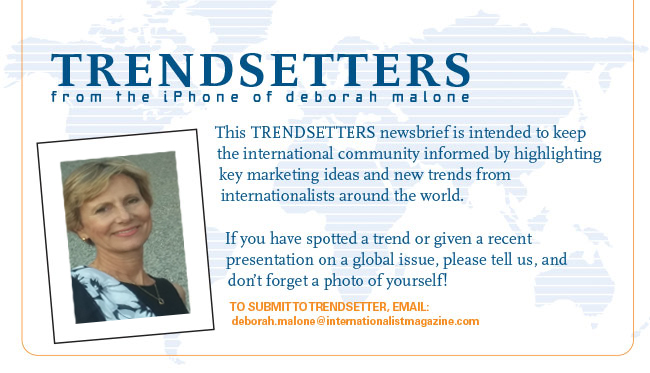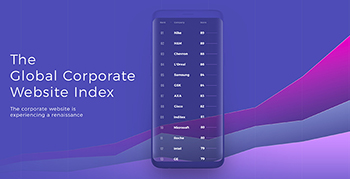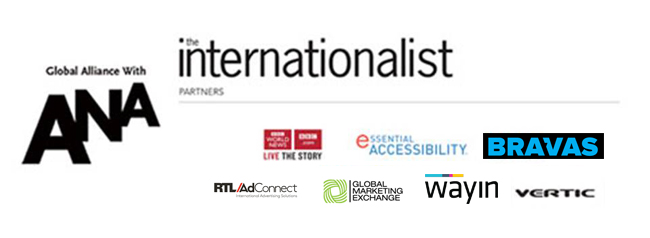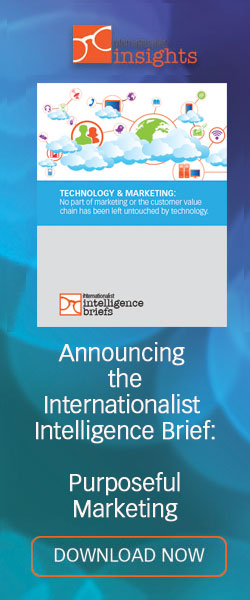

Vertic’s Sebastian Jespersen
See the current issue
of The Internationalist magazine
Find out how to sponsor an issue of Trendsetters
|
|
Trendsetters: Assessing Corporate Websites is Critical to the Modern Company says Vertic’s Sebastian Jespersen
Sebastian Jespersen, CEO of Vertic and Author of Release the Power of Entangled Marketing™: Moving Beyond Engagement, sees new significance in the dot com platform, particularly at a time when the "customer experience" aspect of corporate websites is undergoing massive change. "Today, the corporate website has become the focal point of the modern company in a post-digital era. It is now the prominent communications tool to engage all stakeholders at every step of their information journey. New technologies, combined with the relevant integration of data, create an opportunity for the corporate website to be a meaningful, value-adding experience."
As a result, Vertic has released its first Dot Com Ranking, an assessment of 80 leading companies' corporate websites. The Index is a ranking and comparative assessment of corporate dot-com sites.
"Rather than simply showcase products and services,' says Jespersen, "corporate brands now must understand the value of being relevant to the needs of multiple stakeholders, which often means incorporating data, insights and technology to be able to resonate with customers, the public and other key constituents."
The new Dot Com Ranking from Vertic benchmarks the performance of leading corporate brands through criteria that examines three critical categories: UX/Design, Content and Technology. The report gauges a website's strengths and weaknesses in these three areas, so that individual scores can be understood on a comparative scale.
The UX/Design category assesses corporate websites on feasibility of navigation, information hierarchy, customer decision journey alignment, and potential for a circular user flow. The Content portion reviews storytelling capability, SEO, social integration and the competitive power gained from content alignment. The Technology evaluation considers a site's ability to personalize the experience, which includes the use of dialogue tools, innovative functionalities such as Intelligent Search, and best-practice usage of a CMS (Content Management System) and marketing automation.
The ranking is expected to increase the number of brands assessed on a periodic basis.
Sebastian Jespersen comments: "We believe that many companies still have a long way to go in terms of improving their dot com. The best sites are moving away from being simple catalogues of products and services-- instead of acting as the spine of a company's marketing practice by providing genuine value to customers over time. Leveraging the corporate website for greater purpose beyond just the transactional moment in time means that these companies will have greater opportunities to positively entangle with their audiences and attain long term Share of Life."
He adds, "When done right, this has proven to organically attract more of th right traffic, dramatically shorten the sales cycle and subsequently create greater business impact."

The assessment elements in the new Dot Com Ranking include:
Search: A corporate website's search functionality should provide the user with an experience that surpasses the intelligence now expected from Google – as the brand ought to know more about its own products and offerings, as well as their relevance to the user. Effective integration of machine learning not only improves search results for the corporate website but is critical to facilitating the information journey.
Information Journey Alignment: The ability to understand different stakeholders' content needs at each stage of their information journey enables a website to dynamically tailor the experience with relevant material. Rather than structuring content on the company's own vocabulary and taxonomies, it is necessary to create a more customer-centric mindset. In other words, the content architecture and navigational infrastructure should be adapted to the information journey.
Content: Top-performing corporate websites ensure that the user's needs are put front and center. Data-driven identification of the audience's usage of vocabulary and semantics is key for developing the correct website content strategy. In combination with the information journey alignment, the resulting content architecture should accommodate a "circular flow"on the site to ensures the user does not reach any "dead ends." The goal is to present ongoing content that advances corporate website users to the next phase of their journey.
Storytelling: A brand story is more than a narrative about its origins; it is a showcase of the brand's purpose, values and reason for existence. Successful storytelling elevates brand trust and enables the corporate website to garner user interest in earlier stages of their decision-making process.
Personalization: Tailored experiences are no longer a privilege but an expectation. When a brand's own data is combined with 3rd party data and digital behavior patterns, the opportunity for a more relevant customer experience increases. True personalization starts with content that answers a user's information needs at the critical points of their discovery process. As the user progresses in their information journey, the corporate website can offer greater personalization that accounts for a user's past behavior and content consumption. Not only does this expedite the user's decision journey but fosters a closer relationship with the user.
Vertic is an award-winning global independent digital agency founded by Sebastian Jespersen and dedicated to creating groundbreaking solutions. The name Vertic echoes of its Nordic heritage, deriving from the Old Norse letter or rune "Dagaz", which means ‘day'. In countries with long nights and dark winters, a new day signifies transformation and bold change. It is Vertic's mission -through a foundation of strategy, creativity and technology - to shed light on bold change to help clients grow.
Vertic has created a business marketing model called ‘Share of Life™' that underscores how a relationship between brand and customer can last a lifetime. This methodology is being applied for world-leading brands such as GE, Microsoft and SAP. Learn more at http://www.vertic.com

